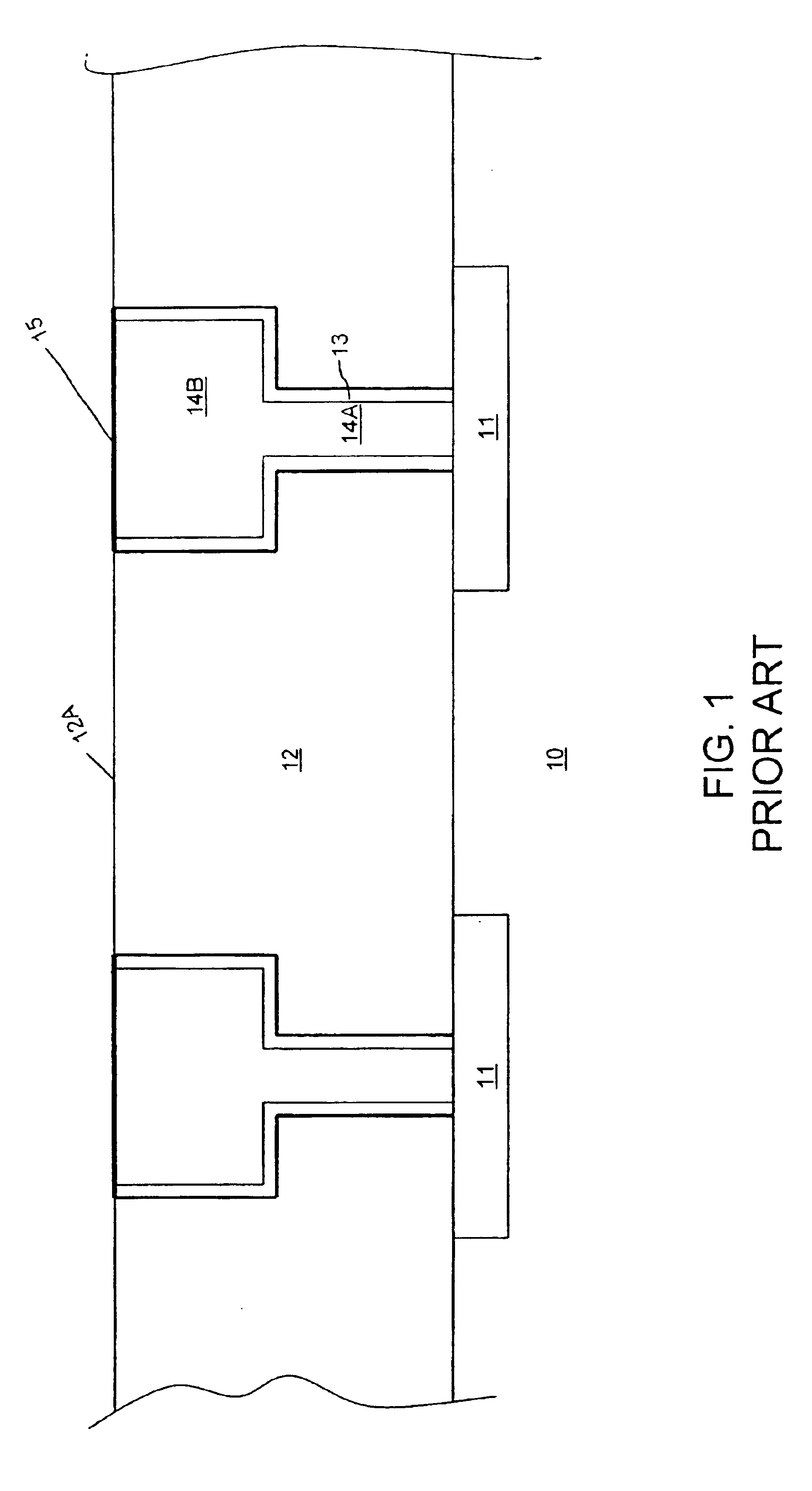Method of treating inlaid copper for improved capping layer adhesion without damaging porous low-k materials
a technology of inlaid copper and low-k materials, which is applied in the direction of basic electric elements, semiconductor/solid-state device manufacturing, electric devices, etc., can solve the problems of reducing affecting the adhesion of the capping layer, and exhibiting poor adhesion to the cu or cu alloy surface, so as to reduce the parasitic rc time delay
- Summary
- Abstract
- Description
- Claims
- Application Information
AI Technical Summary
Benefits of technology
Problems solved by technology
Method used
Image
Examples
Embodiment Construction
The present invention addresses and solves problems attendant upon fabricating multi-layer interconnect devices, particularly parasitic R×C time delays. The capacitance, both layer-to-layer and within-layer, is primarily attributed to the film properties of the ILD. The present invention enables efficient implementation of multi-level interconnect technology using Cu and / or Cu alloys with various porous low-k dielectric materials for ILDs, by providing methodology enabling formation of reliably capped Cu and / or Cu alloy interconnects, without or with significantly reduced degradation and / or etching of the porous low-k dielectric materials. As employed throughout this disclosure, the symbol Cu is intended to encompass high purity elemental copper as well as copper-based alloys, such as copper alloys containing minor amounts of tantalum indium, tin, zinc, manganese, titanium, germanium, zirconium, strontium, palladium, magnesium, chromium and tantalum.
Experimentation and investigation...
PUM
| Property | Measurement | Unit |
|---|---|---|
| power | aaaaa | aaaaa |
| dielectric constant | aaaaa | aaaaa |
| dielectric constant | aaaaa | aaaaa |
Abstract
Description
Claims
Application Information
 Login to View More
Login to View More - R&D
- Intellectual Property
- Life Sciences
- Materials
- Tech Scout
- Unparalleled Data Quality
- Higher Quality Content
- 60% Fewer Hallucinations
Browse by: Latest US Patents, China's latest patents, Technical Efficacy Thesaurus, Application Domain, Technology Topic, Popular Technical Reports.
© 2025 PatSnap. All rights reserved.Legal|Privacy policy|Modern Slavery Act Transparency Statement|Sitemap|About US| Contact US: help@patsnap.com



